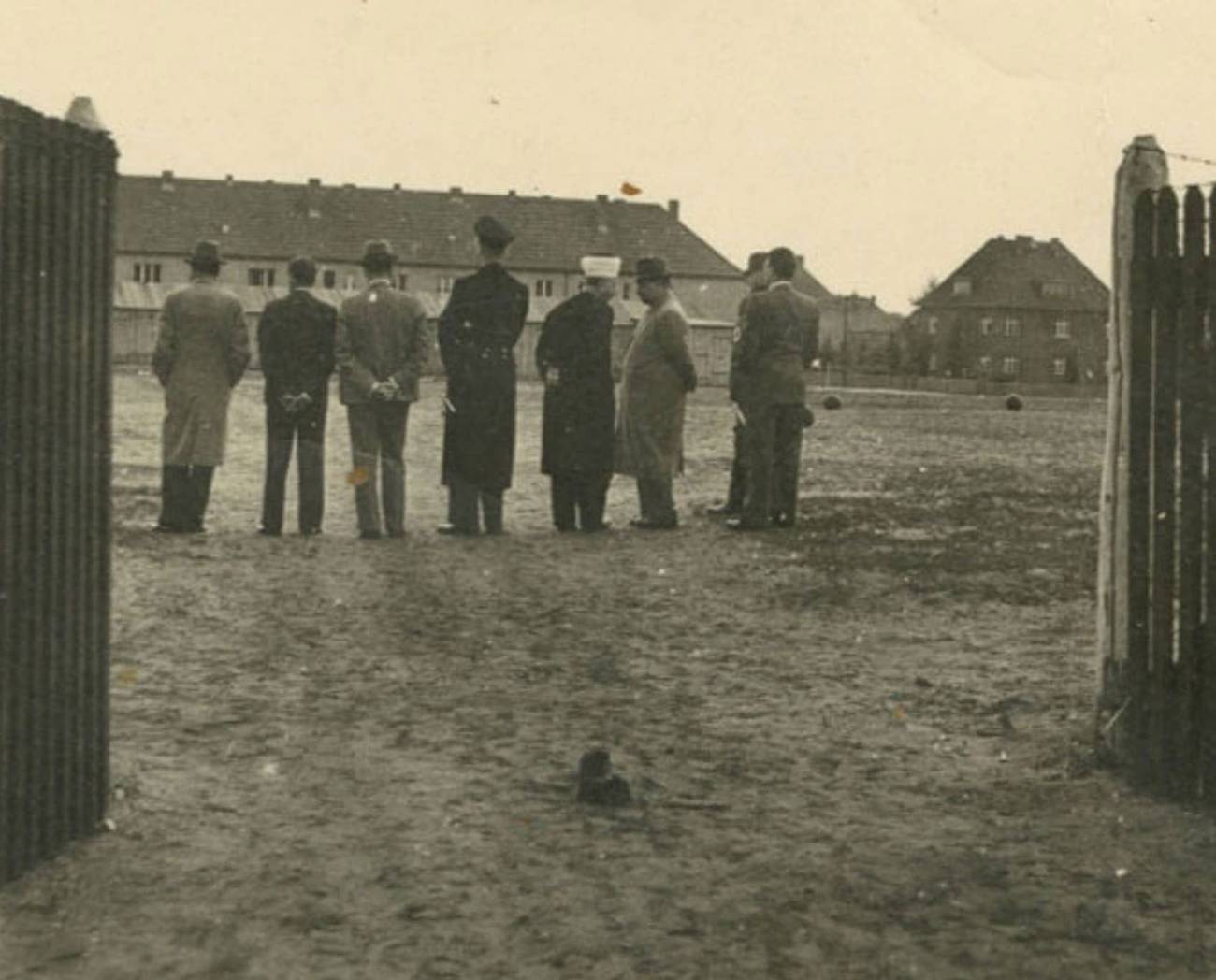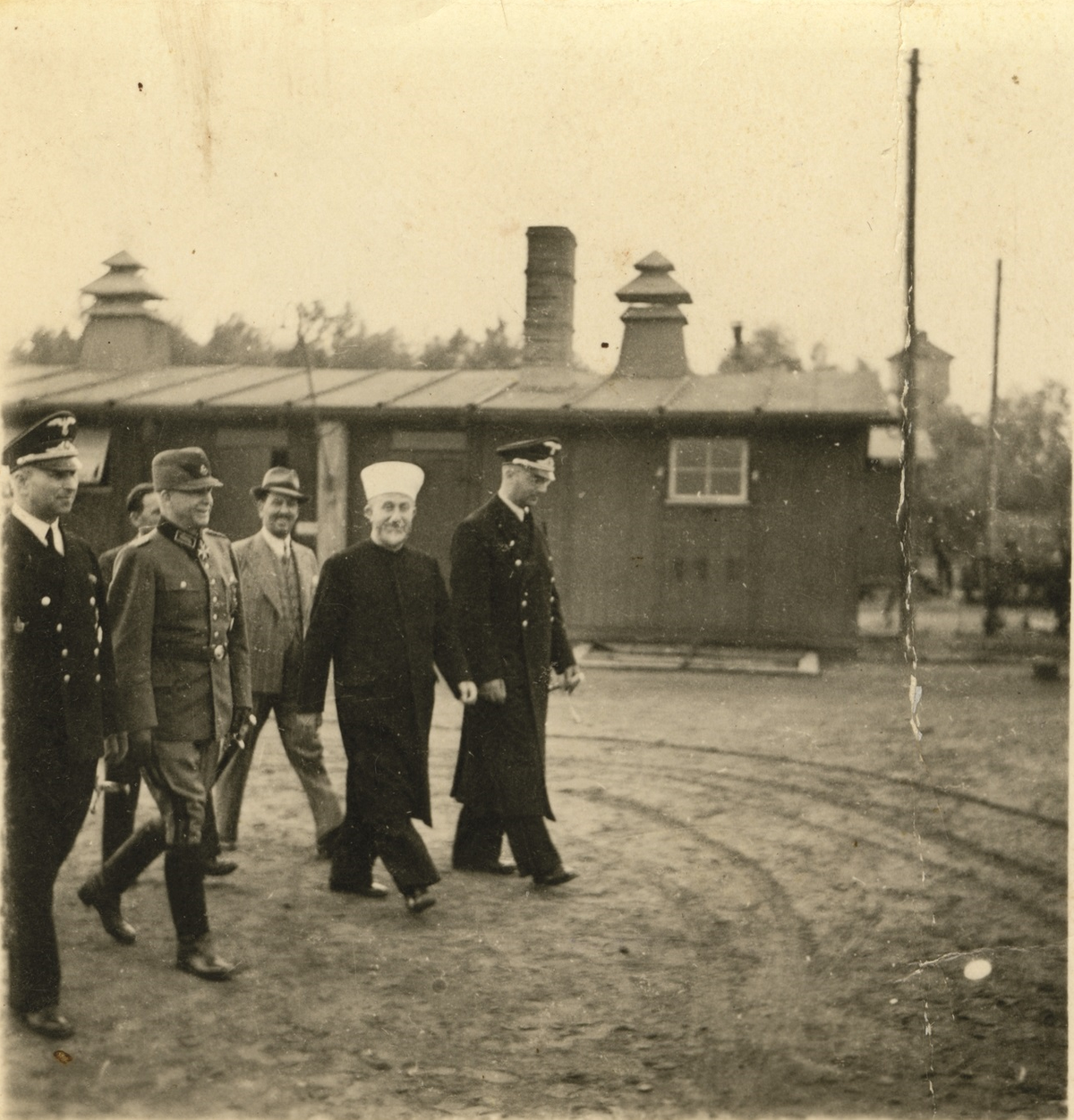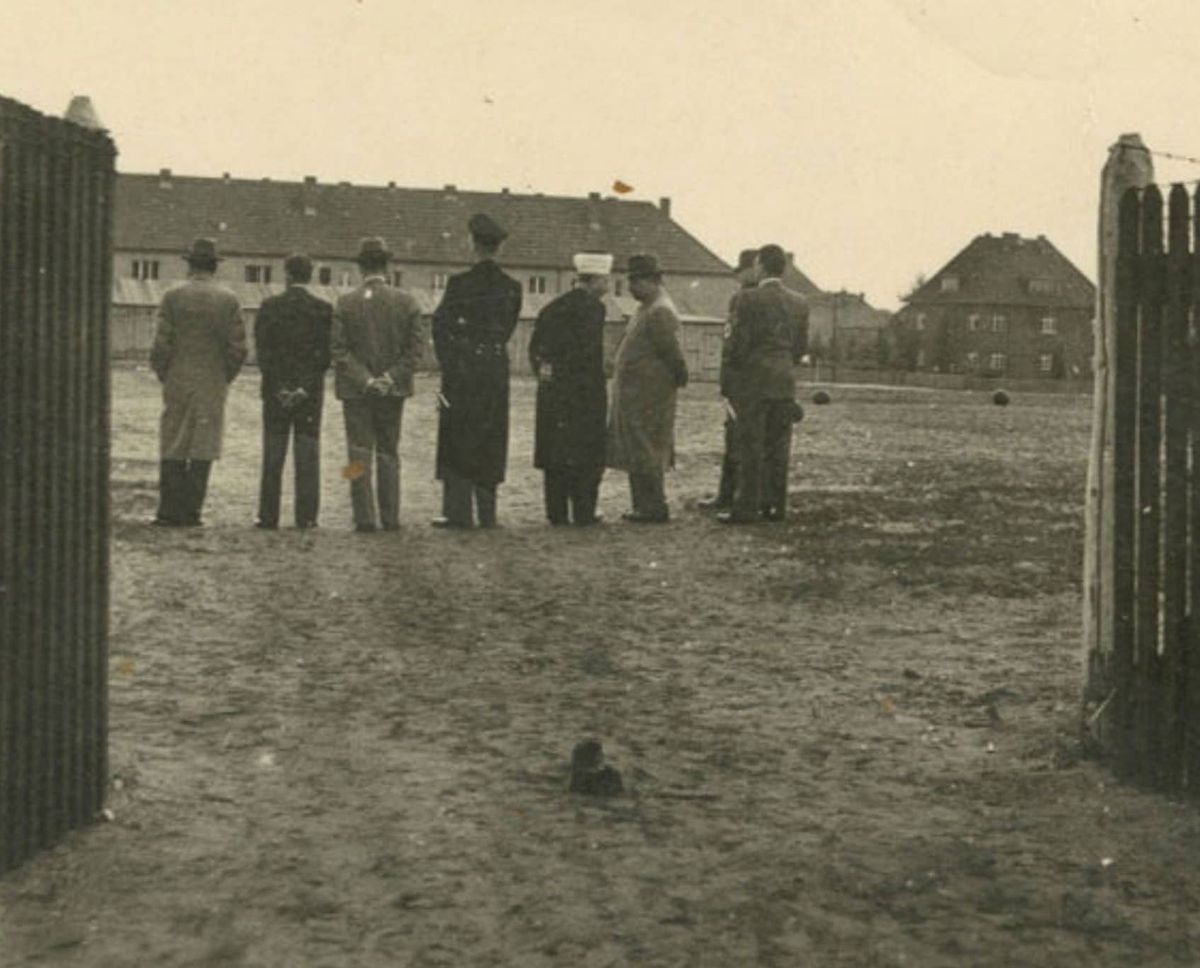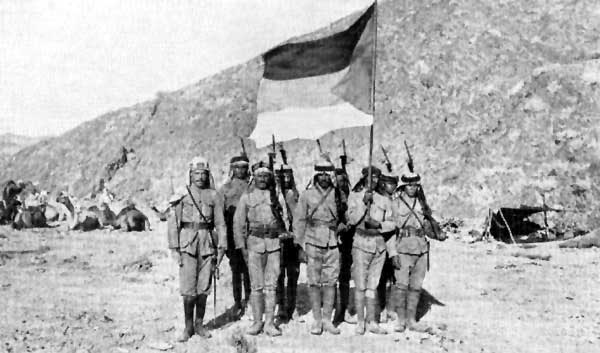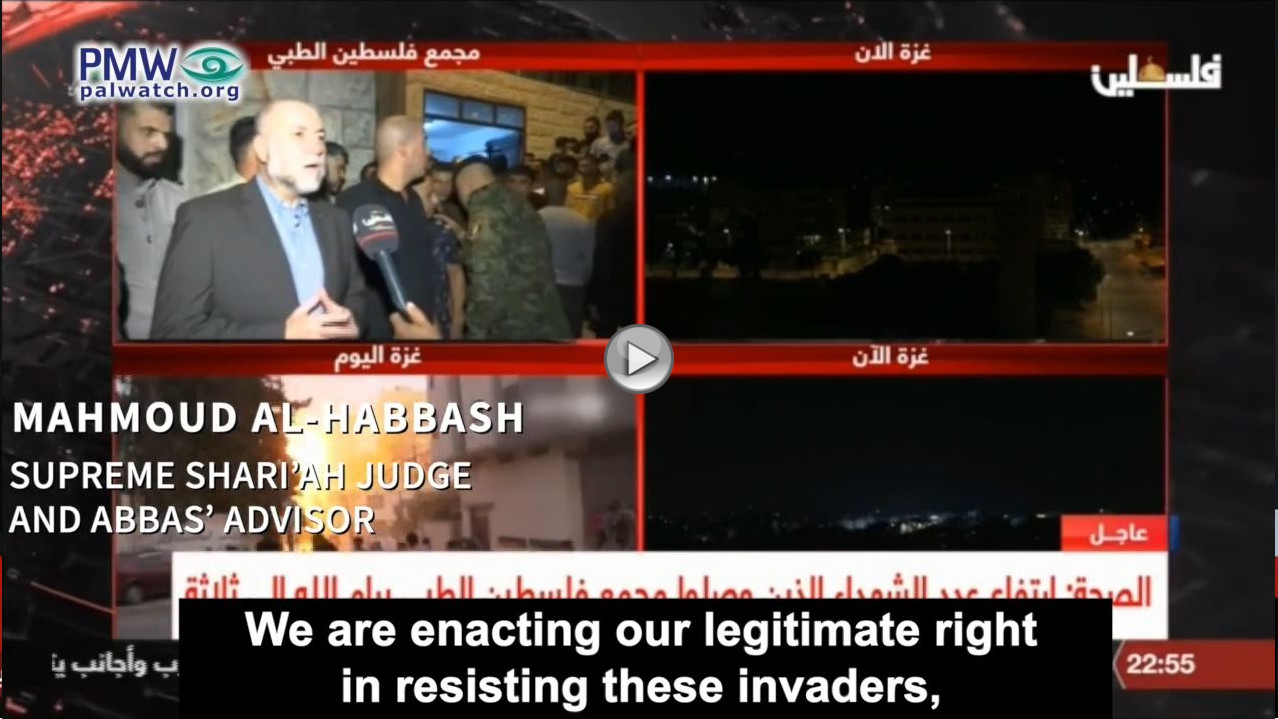[ Palestinians first leader, Al Husseini, with Nazis at a concentration camp. And the refusal of anti Israel people to see the end this leader had envisioned for all Jews in the Mandate for Palestine and around the ME ]
al-Hajj Amin al-Husseini visits the Trebbin concentration camp, 1942KEDEM AUCTION HOUSE
In 2017, Jerusalem’s Kedem auction house posted three of six previously unknown photos on the internet, in which the grand mufti of Jerusalem, Amin al-Husseini, inspects a Nazi concentration camp along with Nazi senior officials and government figures. According to the auctioneers, an expert was of the opinion that these inmates performed forced labor at the Trebbin camp near Berlin, which was, from 1942 to 1945, an SS artillery training place with a branch of the Sachsenhausen concentration camp in Oranienburg. Built after World War I as a Christian “City of Peace,” it was taken over by the SS in 1935. Among the prisoners were Jews from Hungary. Forced labor, terror and violence characterized their daily lives. Kedem hoped viewers would help identify men in the photos.
Photo 1 ORIGINAL PHOTO: KEDEM AUCTION HOUSE
As it turns out, I can now shed light on five of the foreign guests in the pictures—global leaders whose presence reflects the transregional history between Europe, the Middle East, India, and America. The photographs also provide irrefutable proof that all of the men present had precise knowledge of the fate of Jews in Hitler’s Germany—and of the likely fate of Jews in their own home countries under Nazi rule. According to Kedem, the photos are stamped “Photo-Gerhards Trebbin.” This stamp indicates that they were probably photographed in Trebbin, 30 kilometers south of Berlin, “around 1943.” The six photos were auctioned for $12,300 to a private individual who, I would argue, should post the remaining three images on the internet as a humanitarian gesture to families of the prisoners.
Only three of the seven men pictured survived World War II and its immediate aftermath. The two German officials in uniform were both directly involved in the Holocaust. Before and after their trip to the camp, Adolf Hitler met separately with each of the foreign guests, who included the Palestinian leader al-Husseini, the former Iraqi Prime Minister Ali al-Kailani, the Croatian Ustasha ideologue Mile Budak, and the Indian Hindu leader Subhas Chandra Bose. So who were they?
Mile Budak was the ideologue of Croatia’s ethno-radical, anti-Semitic Ustasha party, which ran a Nazi satellite state formed in 1941. On the left is Dr. Fritz Grobba, a former envoy to Kabul, Baghdad, and Jidda. He was a Protestant and not a member of the Nazi Party. He had been in charge of the Middle East in the German Foreign Office since early 1942.
Grobba and the two Arab leaders pictured had supported the anti-British coup in Iraq, which was followed by the al-Farhud pogrom in mid-1941. In it, 179 Jews were killed and many stores looted. Masterminds like al-Kailani and al-Husseini wanted to signal, there in a 2,500-year-old community, how Arabia’s Jews should be treated.
In the second photo is the politician Arthur Seyss-Inquart, who presided over Hitler’s Anschluss of Austria in 1938 and two years later served as commissioner for the occupied Netherlands. In the process, he oversaw the deportation of 100,000 Jews to death camps and the enslavement of half a million Dutch people, half of whom were forced to go to Germany as slave laborers.
After the Nuremberg trials in 1946, Seyss-Inquart ended up on the gallows for his crimes against humanity. Budak shared this fate a year earlier in Zagreb, where he was hanged as a war criminal for his policy of sending Jews, Serbs, Sinti, and Roma to death camps.
On the other hand, both Arab leaders continued their anti-Jewish and Islamist policies unimpeded after the end of the war: al-Kailani until 1965 and al-Husseini until 1974. Outside of Israel, Nazism had hardly been delegitimized in the Middle East, and its adherents often came to power after the war ended. The Iraqi al-Kailani staged a coup in Baghdad but failed. He was sentenced to death, then exiled to Beirut.
Photo 2, with Arthur Seyss-Inquart appearing second from leftKEDEM AUCTION HOUSE
(full article online)
An analysis of photographs sold at a Jerusalem auction house offers new insight into the role of foreign accomplices in Hitler’s Final Solution

www.tabletmag.com

 Are you trying to convince yourself? Not sure what you are trying to pull.
Are you trying to convince yourself? Not sure what you are trying to pull.
